Implementation of NHF at the Rosie
Explore the research behind the decision to implement NHF at the hospital.
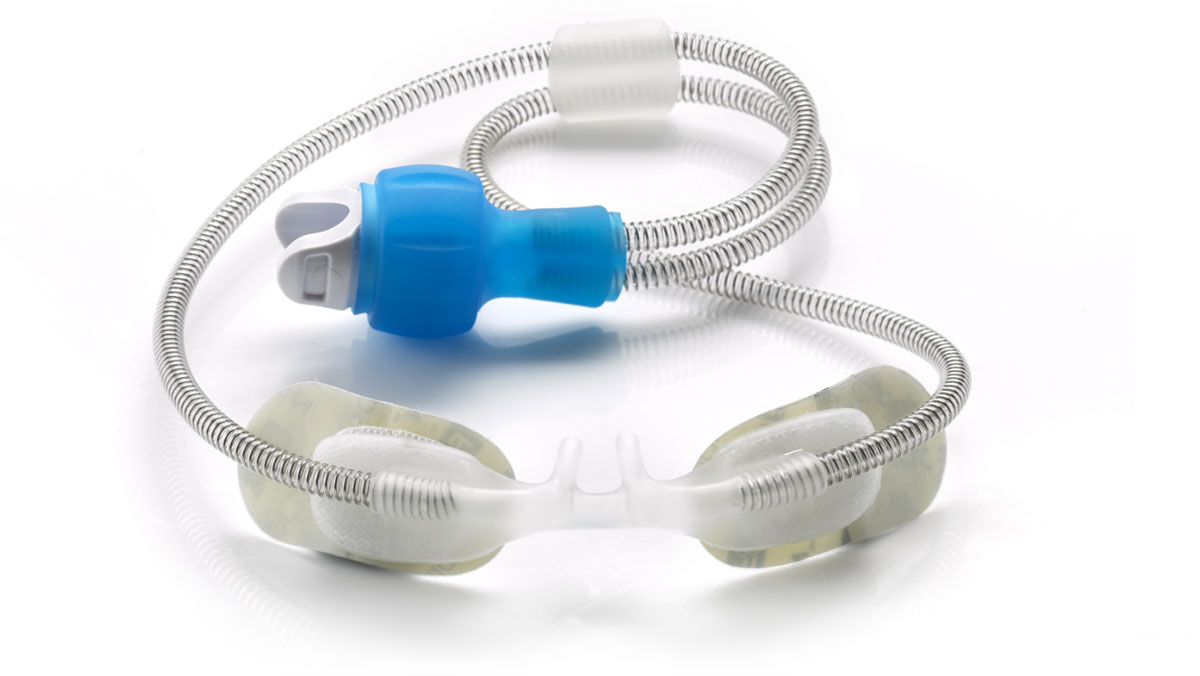
A non-sealing nasal interface specifically designed for the flow requirements and anatomical features of neonates on NHF therapy.
How does NHF therapy work?
NHF is a flow-based therapy designed to be an open system that typically consists of a flow source to blend air and oxygen, a humidifier to heat and humidify the gas mixture, and a circuit and interface to deliver humidified gas to the patient. Suitable sizing of the nasal cannula is important to ensure the open system is maintained.
NHF is associated with a range of mechanisms of action and physiological benefits:
• Ensures washout of anatomical dead space.2-4
• Provides dynamic positive airway pressure.2-5
• Delivers heated and humidified gas.6-9
• Provides supplemental oxygen.10-12
• Improves patient comfort.13-16
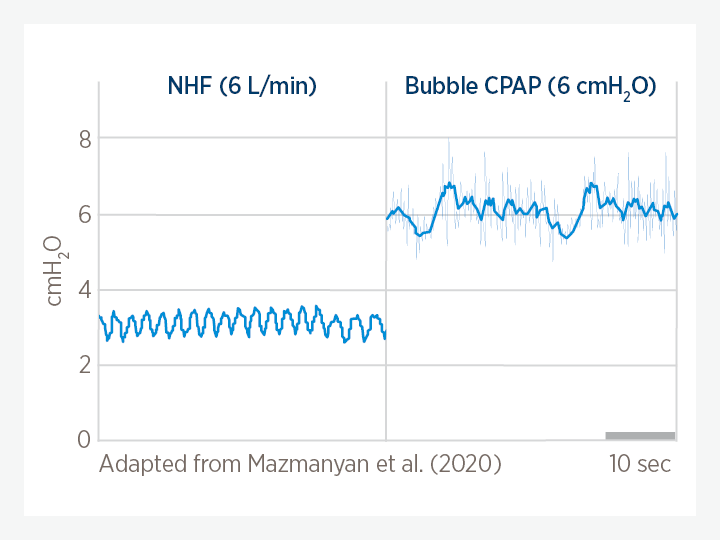
Provides dynamic positive airway pressure
With NHF, flow is prescribed and set. A level of dynamic positive airway pressure is generated because of the flow, which is dependent on a range of factors such as the weight of the infant, the set flow rate and nare occlusion.2,4
It is important the nasal cannula does not create a seal in the nares so NHF is maintained as an open system.
The dynamic positive airway pressure associated with NHF has been shown to reduce inspiratory effort and the work of breathing compared with standard oxygen therapy.2,4,5
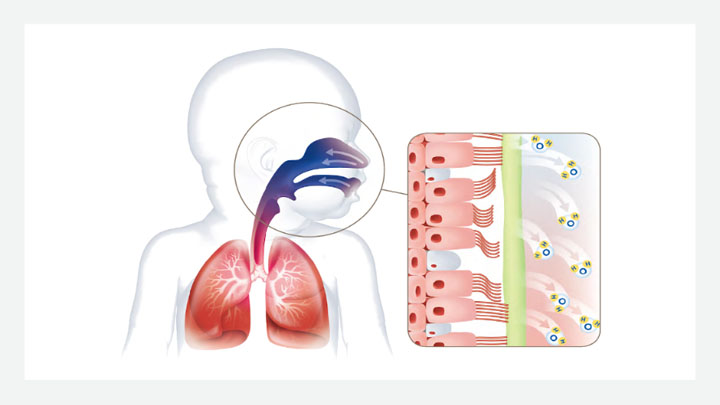
Delivers heated and humidified gas
NHF delivers a heated and humidified blend of air and oxygen, maintaining the nasal mucosa and enhancing mucociliary function.6 It reduces mucosal dryness and improves secretion clearance compared with standard oxygen therapy.7 Consensus guidelines state that NHF should always be adequately heated and humidified.8,9
Provides supplemental oxygen
NHF differs from standard oxygen therapy in that it can accurately deliver a prescribed FiO2 when the set flow rate meets or exceeds a patient’s peak inspiratory demand.10,11
FiO2 is the proportion of oxygen in the air that is inspired.11 In addition to the ability to deliver accurate FiO2, the combined mechanisms of NHF have the effect of improving oxygenation status.10-12
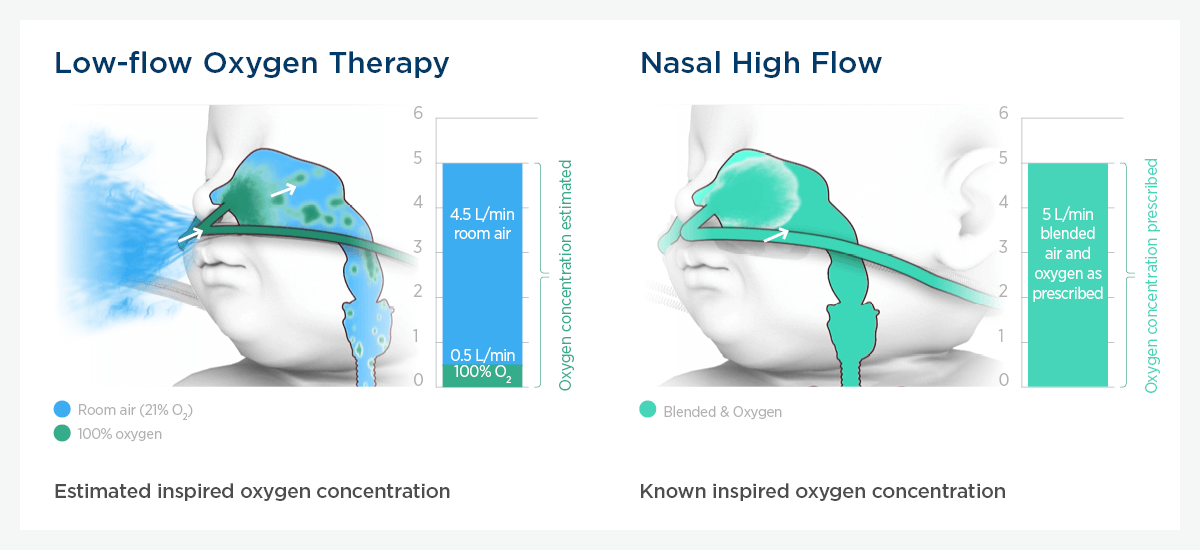
Compared with standard oxygen therapy, NHF can accurately deliver a prescribed FiO2 when set flow meets or exceeds the patient's peak inspiratory demand.

Improves patient comfort
Because NHF is an open system, it is gentle on the patient’s nose.
Compared with continuous positive airway pressure (CPAP), NHF improves patient comfort, compliance and tolerance to therapy.13,14 NHF is also associated with a significant reduction in the rate of nasal trauma.15,16
Clinical NHF studies have used objective measures, such as heart rate, facial expressions, and movement, to assess patient comfort.14
Setting flow rates for neonates
The body of evidence suggests that using adequate starting flow rates is critical to achieving physiological and clinical outcomes. Data from systematic reviews, randomized control trials (RCTs) and leading expert guidance suggests NHF should be initiated at 4 – 6 L/min.8,9,16,17
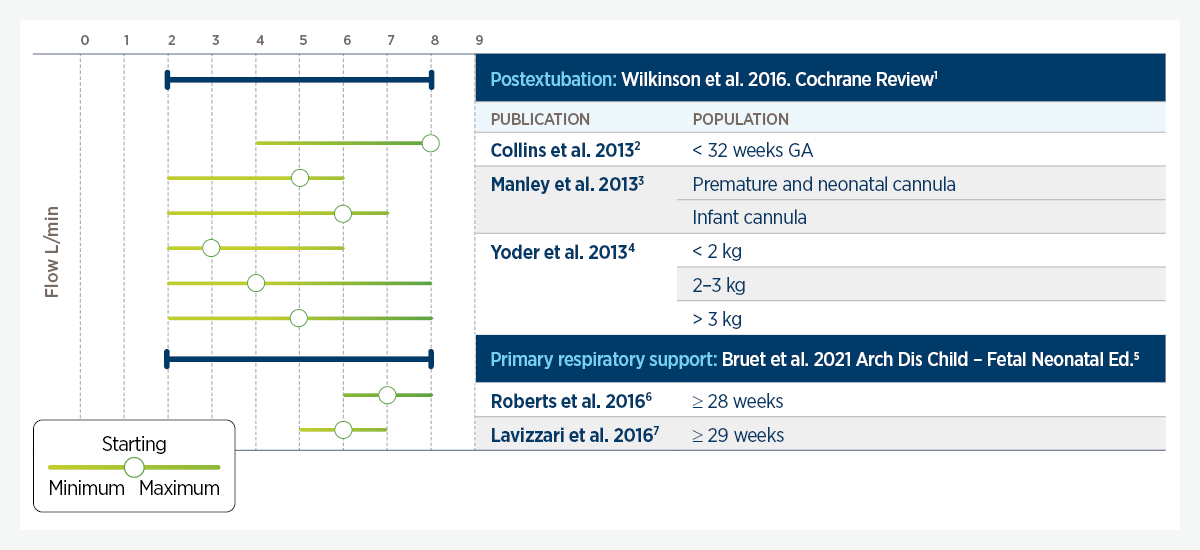
.
F&P and Optiflow are trademarks of Fisher & Paykel Healthcare Limited. For patent information, see www.fphcare.com/ip